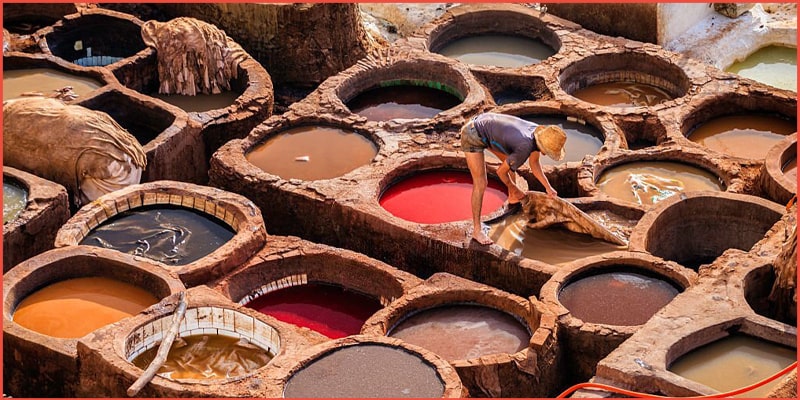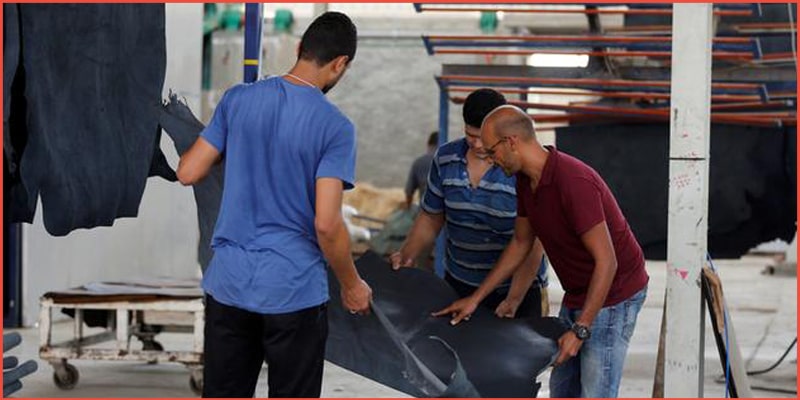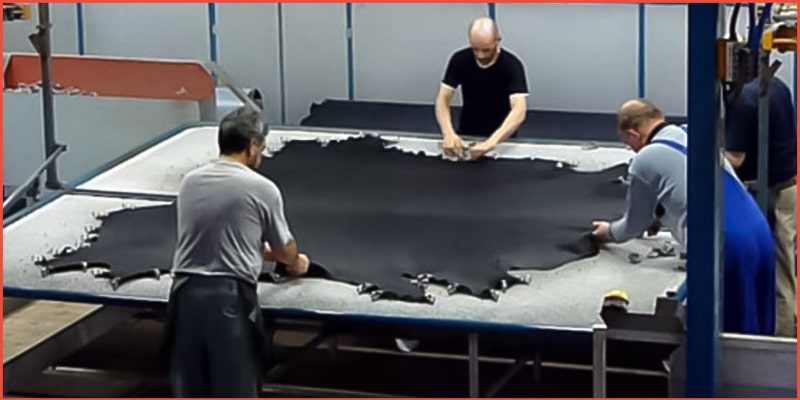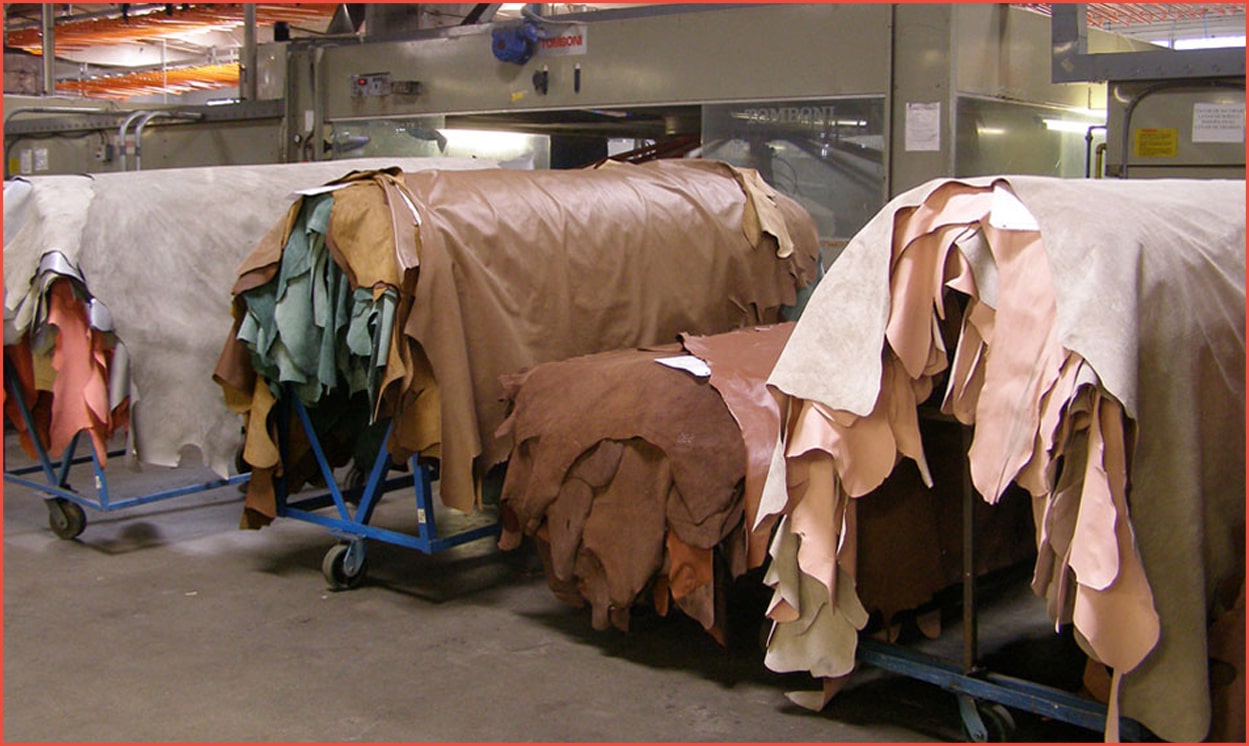Making leather products is a procedure that involves using a fresh hide to make exquisite leather accessories. There are dozens of steps in the process, many of which are required which have a greater impact on the end output than others. It is a natural product and one of man’s most ancient and beneficial discoveries. Humans have used leather for thousands of years for protection, tools, weapons, and furniture.
Leather can be made from the hides of practically any animal, including sheep, goats, cows, crocodiles, horses, even pigs, but cowhide is the most widely utilized hide. Animal hides are used to make leather, which are discarded in the meat and dairy sectors. The hide of the animal is transformed into magnificent, a long-lasting and sturdy material.
Nonetheless, the fashion world would be incomplete without leather and objects derived from it, particularly jackets, handbags, and shoes. This article, on the other hand, is intended for leather fans and people interested in learning more about how leather is created.
What Is the Process of Making Leather?
It is necessary to process hide or skin before using it as leather. This is referred to as ‘tanning.’ The tanning process alters the chemistry of the leather fiber which makes it difficult for bacteria and fungi to break it down and increase the durability of the leather. A tanning procedure, on the other hand, is required to make leather soft and supple for usage. This is the first process in manufacturing leather after the hides have been cleaned of dirt, blood, salt, and hair at the beam-house. For thousands of years, this process has been carried out in a variety of methods.
What Processes Occur During the Leather Tanning?
Without a doubt, leather preparation is a time-consuming process. Understanding the layer separation procedure from the hide is the simplest approach to comprehend its creation. A top layer (hair side) and an under-layer are created by splitting the leather across its thickness. Full-grain refers to the top layer. It refers to the exposed surface of the leather that gives it the durability and malleability required to be deemed fine leather. The inner side is significantly stiffer and less durable. However, it’s perfect for use following a coating treatment. Animal hides go through a number of phases in the tanning process before they can be used to manufacture leather items. In short, there are five separate steps to the tanning process:
- Pre-Tanning
- Tanning
- Selecting
- Dressing
- Finishing
Step 1: Pre-Tanning
The next step is to cure the hide with salt once it arrives from the abattoir. Curing prevents bacteria from developing between procurement and processing, which prevents putrefaction. The hide is next bathed in saltwater brine, which contains chemicals to prevent bacterial and fungal growth while also removing salts used to preserve the hide. The procedure is carried out in drums that accommodate up to 200 hides.
Liming: The skins are liming after they have been soaked. In upholstery leather, a lime solution (calcium hydroxide) and sodium sulphide are used to soften and improve the hide so that it becomes supple and flexible. This cleans the skin’s natural grease, lipids, keratin, and hair.
Fleshing: The connective tissues and meat remnants are removed from the flesh side by rotating scarping rolls. The hides are then delimed, which takes around 2 hours and involves adding acids to a drum or pit to lower the alkalinity of the hides. Following that, the hides can be bated to soften them.
Pickling: After that, there’s pickling, which adds acids to slacken the pelt and improve the tanning agent’s penetration.
Degreasing: Excess grease is cleaned with a solvent or water-based solution prior to tanning

Step 2: Tanning
After the process of converting pre-tanned leather to leather, tanning takes place. Hides can be tanned in a variety of techniques, but the final effect is that they won’t putrefy and can be colored and used for manufacturing.
- Chrome Tanning:
Chrome tanning involves soaking hides in baths containing a chemical solution called Chromium Sulfate til they are ready to be processed further. In 1858, chromium tanning superseded the traditional method of tanning leather as tanneries sought to make the process more cost-effective and speedier. This tanning process can be accomplished significantly more quickly, usually in a matter of days.
- Vegetable Tanning:
Tannins from the leaves of trees, barks and plants are used in vegetable tanning. Tannins from oak trees, mimosa trees, and chestnut trees are popular, but hundreds of other tree species and flora have also been employed. After the preparation step, the hides are placed in tanning pits, which are loaded with tanning solutions of various strengths in drums. For two to three months, hides were swapped between drums, and the solution grew stronger. The tanning agents get into the pores of the skin. The hides take on a characteristic appearance and color as a result of the fermentation and deposition process. However, this is a lengthy process, and it might take weeks or even months to throughly tan the skins. Hence, this technique is rarely employed to make upholstery leather.

Step 3: Selecting
After tanning, surplus water is removed from the hide in the third stage. The hides are next evaluated according to the number and location of natural characteristics and defects.

Step 4: Dressing
Following that, the hides must be dressed as follows:
- Shaving – Gives hides a uniform thickness.
- Dyeing – To color leather, a dye is applied.
- Re-tanning – To change the physical attributes of leather, additional tanning ingredients can be added before it is used.
- Setting – Removing excess moisture and creases with a mechanical technique.
- Drying: The hides are either stretched over enormous frames or vacuum-dried.
- Trimming: The process of removing rough or ragged edges.
 Step 5: FinishingThe leather is then tanned. The finishing step is used to get rid of any leftover oils on the skin. Finishing hides flaws in the grain without detracting from the leather’s natural attractiveness. It also ensures its smoothness while imparting the right level of shine and antique appearance. This is the final step in the leather processing process before it is used in clothing, shoes, or other products.Making leather appears to be a difficult process, but it produces a wide range of great products that we use in our daily routine.
Step 5: FinishingThe leather is then tanned. The finishing step is used to get rid of any leftover oils on the skin. Finishing hides flaws in the grain without detracting from the leather’s natural attractiveness. It also ensures its smoothness while imparting the right level of shine and antique appearance. This is the final step in the leather processing process before it is used in clothing, shoes, or other products.Making leather appears to be a difficult process, but it produces a wide range of great products that we use in our daily routine. Let’s wrap it up!Leather is a fantastic material that improves with age. Leather manufacturing is a complicated process that necessitates the competence and experience of a large number of skilled professionals. Although the techniques involved in producing leather appear to be simple, there is much more to it than meets the eye. Conclusively, leather furniture is an excellent complement to any area in your home, particularly the living room. Leather is susceptible to wear and tear from dust, heat, sharp objects, and other factors. To keep your leather furniture looking and feeling its best, it must be well-maintained on a regular basis.
Let’s wrap it up!Leather is a fantastic material that improves with age. Leather manufacturing is a complicated process that necessitates the competence and experience of a large number of skilled professionals. Although the techniques involved in producing leather appear to be simple, there is much more to it than meets the eye. Conclusively, leather furniture is an excellent complement to any area in your home, particularly the living room. Leather is susceptible to wear and tear from dust, heat, sharp objects, and other factors. To keep your leather furniture looking and feeling its best, it must be well-maintained on a regular basis.
Learn more about how this amazing material was discovered, go to huffam.com and read the LEATHER -THE LORD OF FABRICS: A SHORT HISTORY

